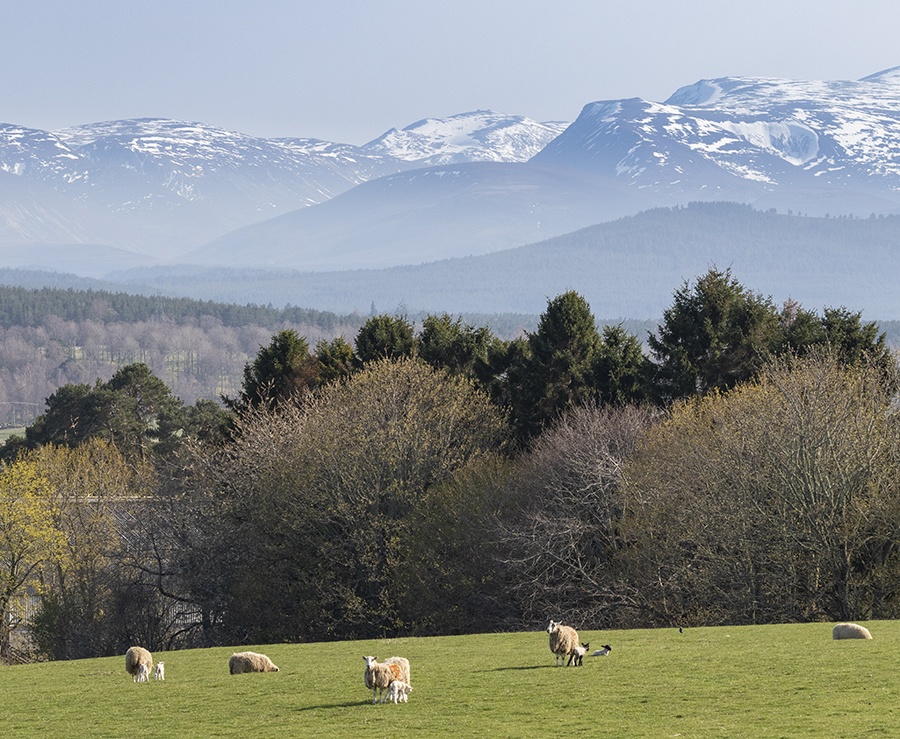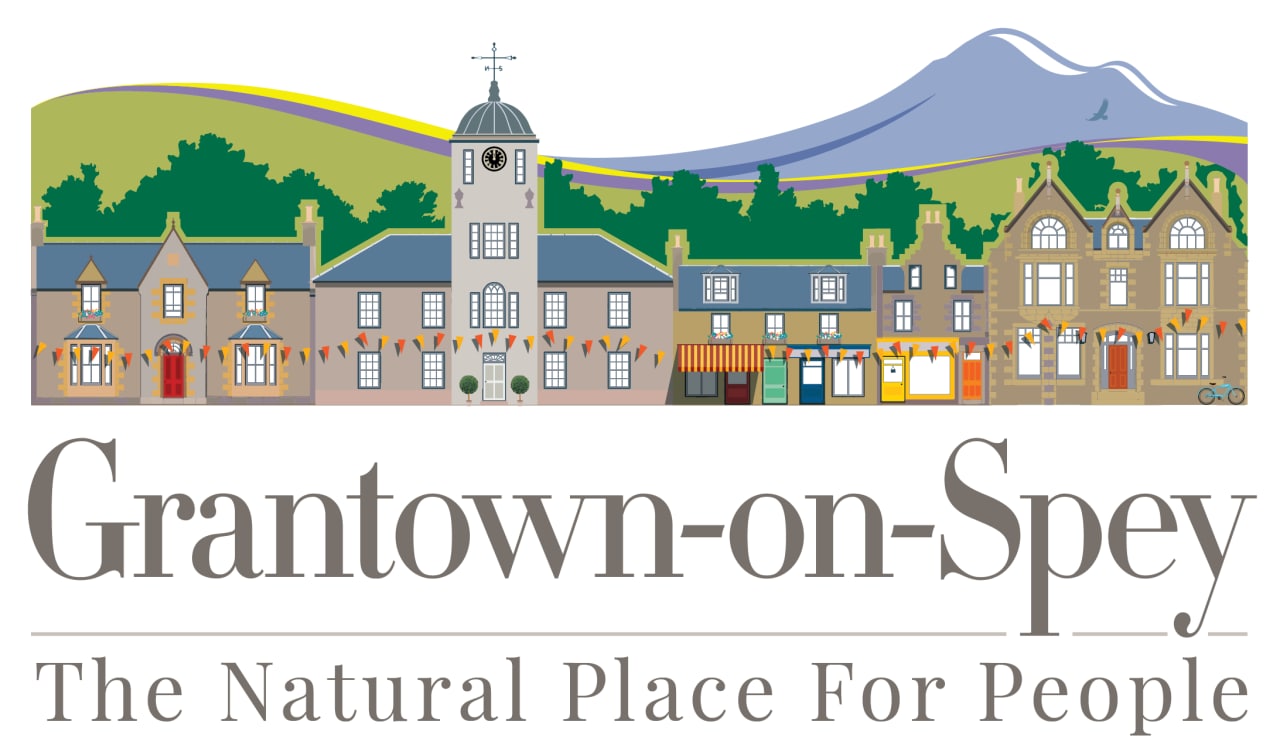STAY
EAT & DRINK
SHOPS & SERVICES
SEE & DO
Grantown, founded in 1765, capital of Strathspey, lies at the very heart of the Highlands. Home of the Clan Grant, it is a perfect base for exploring the North and its rich heritage and environment. It is considered to be one of Scotland’s finest planned towns; a product of the Scottish Age of Enlightenment. In its unique way it tells of the birth of the modern Highlands; a story which flows from the Jacobite rebellions and their aftermath and highlights the responses to the problems of Highland famine and poverty in the late 18th century. It is a tale of vision and vitality, skill and courage, passion, poverty and perseverance, reaching far beyond the bounds of Strathspey.
It was James Grant of Grant, later known as the Good Sir James, who established the town. On the 28th of June 1765, it is recorded, the first stone of the first building was laid; a linen manufactory . The building cost £40 sterling and was 58 feet long and 28 feet wide. It consisted of a weaving shop and accommodation for the weaver and his family.

Various rural industries, particularly the weaving of linen, were attracted to the infant new town and the population had grown to 435 by 1801. However, the Grantown Linen Company soon failed as did the Woollen Manufactory, which employed at one time some 42 people. The well-known remark of Mrs Grant of Laggan, referred to these new Grantown businesses: “A Highlander never sits at ease at a loom; ‘tis like putting a deer in the plough.”
As Grantown grew so did the number of merchants. In the earliest days trade came from travelling packmen. With the foundation of the town businesses were established around its market place. By 1800 it was a “thriving populous Village containing above 300 inhabitants and every day increasing more and more”. The founder, it was said, “has great pleasure to see it in a thriving Situation full of Merchants, Weavers … Smiths, Carpenters, Shoemakers, Taylors, Coopers, Bakers …”

By 1861, its population of 1334, was second only to Inverness itself in Scotland’s largest county. Queen Victoria’s “very amusing and never to be forgotten” visit in 1860, her night in the Grant Arms being her first in a public inn anywhere, gave a unique boost to holiday-making in Grantown. The opening of the town’s two railways only three years later made possible a large influx of summer visitors. Grantown became the centre of a transport network with roads and bridges designed by Telford and the earlier military roads and estate roads. Sir James Grant, indeed, had constructed more roads than all those attributed to General Wade.
Many travellers have written about their experiences of the area’s food and company. Queen Victoria commented “The dinner was very fair, and all very clean ….. ending with a good tart of cranberries”. Robert Burns wrote of his dinner with Sir James and Lady Grant, “a sweet pleasant body” and Miss Bailie “the most beautiful, elegant woman in the world” who inspired him later to pen, “O, saw ye bonnie Leslie?” In the Castle Household book, giving daily menus for dinner and supper, we read for dinner on 22nd July 1775 of “Qr of Roo Harcold Gooseberry Tart, 2 Roast Chickens, Boild Qr of Mutton & Turnip, Sallad Currant Dumplen broth, Small beer.” Life, however, for many was not so good. There were years of serious famine causing many deaths. The Old Statistical Account tells of starving peasants crawling to the churchyard in order to meet their inevitable death – on consecrated ground.

Grantown, too, has a rare history of brewing and distilling. Legends abound with tales of illicit distilling and smuggling. The founder of Grantown was so keen to diminish the local consumption of spirits that he himself encouraged the founding of a brewery (in what is now the Grant Arms): though it is recorded that “the cellars of the Brewery were not confined to vats of nappy ale.”
The story of Grantown and Strathspey is also one of music – inspired by nature and the voices of storms lost in desolate mountain plateaus; echoes in the high corries; the hiss of wind and rain through forests of pine; the cry of wild animals, the murmurings of gentle burns and the louder rhythms of the river itself. Since the warlike voice of the Carnyx was heard across the hills these sounds have been reflected in the tunes of harp and fiddle, voices, pipes and drums developing into a unique musical tradition.
One of Scotland’s most iconic paintings is that of the laird’s Piper, William Cumming, now hanging in the National Museum of Scotland but which originally hung in Castle Grant. Music has never been neglected. Whilst pushing ahead with his new town and promoting improved farming and forestry, the young chief of Grant was also careful to foster the music of the Great Highland Bagpipe. In Strathspey in the 1760s and ‘70s, the Cumming family of hereditary pipers to the Chiefs was represented by Angus Cumming, one of the first settlers in New Grantown. His well-regarded collection of “Strathspey, or Old Highland Reels” was published in 1780. In July 1770, James Grant of Grant arranged for one of his sons, John Cumming, to be sent to the McArthur college of piping at Kilmuir in Skye.

Strathspey, with Grantown-on-Spey at its heart, has a very special natural environment, rich in wildlife and spectacular scenery. It was described in the 1930s as “the Elysium of all who love and appreciate natural grandeur”. The landscape of the “majestic Spey” and the “matchless panorama” of the mountains prompted Robert Burns in 1787 on his visit to Castle Grant to describe Strathspey as “Rich and Romantic”. It is Walter Scott’s “Land of brown heath and shaggy wood. Land of the mountain and the flood.” It has, too, always been recognised as a sporting venue. Edward I on his last visit to Scotland in 1306, whilst staying at Garten Rothe, (Boat of Garten’s Castle overlooking the Spey) was hunting in the Garten Hills. Grantown’s story carries accounts of severe punishments for theft and poaching. It is a land, though, which shaped the settlements and formed the character and the culture of its people.
Grantown’s story, its location and its character make it a town for all interests and a town for all seasons. It is an excellent centre for sport, an ideal location for business and a first class tourist resort. It is a wildlife paradise; a town with vibrant shops, true Highland hospitality, a great history and unique heritage: a story well worth celebrating.
